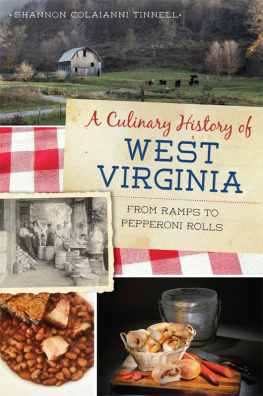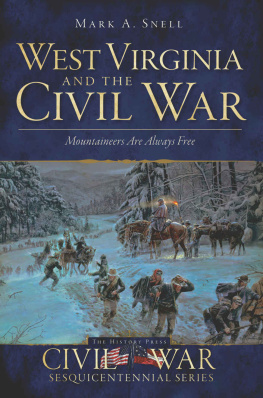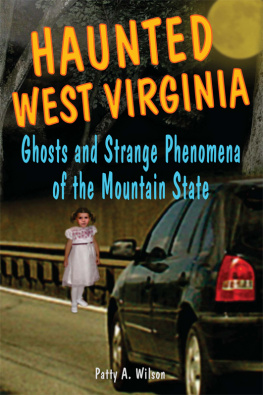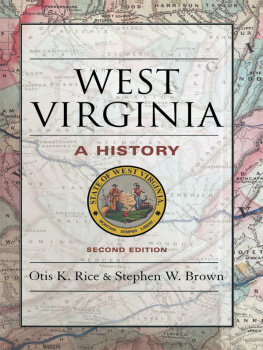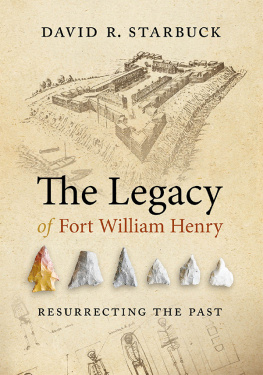Published by The History Press
Charleston, SC
www.historypress.net
Copyright 2016 by Darla Spencer
All rights reserved
Front cover: Artwork created by artist Susan Walton with SA Walton Studio in Florida.
Courtesy of the Ohio History Connection.
First published 2016
e-book edition 2016
ISBN 978.1.62585.721.7
Library of Congress Control Number: 2016941430
print edition ISBN 978.1.46711.851.4
Notice: The information in this book is true and complete to the best of our knowledge. It is offered without guarantee on the part of the author or The History Press. The author and
The History Press disclaim all liability in connection with the use of this book. All rights reserved. No part of this book may be reproduced or transmitted in any form whatsoever without prior written permission from the publisher except in the case of brief quotations embodied in critical articles and reviews.
Midway through researching and writing this book, I lost my best friend, my beloved husband, Bob. He was always there to help, whether it was washing pottery, carrying my bags and books or listening patiently while I talked for hours about archaeology. He was my rock. This book is for him.
CONTENTS
FOREWORD
During my ten-plus years of teaching Native American studies at West Virginia University, countless students have shared artifacts given to them by grandparents whose families have farmed, hunted and fished throughout this region for generations. The typical scenario involves the student opening a brown paper lunch bag or cardboard matchbox, uncovering a small item or two wrapped in cotton or paper towels and revealing some relic discovered after a new garden was tilled or a driveway was flooded out. Regardless of provenience, these earnest students always want to know about the early people who made these items, How old do you think this is? How was it used? What tribes have lived in West Virginia? In addition, not a year goes by without random inquiries from members of the general public asking about the geographical extent of the mound builder cultures, where to get a stone axe head appraised, who to call if a farmer or logger is concerned about intruding on a village site and so on.
I am not an archaeologistmy training lies in the social sciences. So my usual response to these queries is to stress the essential role of context in looking at any archaeological artifact, awareness of laws addressing the disturbance of human burials and theft of funerary objects and other sacred items and consideration of our collective responsibilities regarding preservation and conservation. The next step is to contact my faculty colleague and go-to expert Darla Spencer, the author of this admirable volume. She is knowledgeable, resourceful, generous and well connected to fellow archaeologists, and she has demonstrated such in numerous collaborations within the regions professional and academic communities.
Spencers diligent research and documentation provide an invaluable resource for anyonefellow scientist, college student or casual readerwishing to access the archaeological evidence that helps describe West Virginias Fort Ancient people. In addition to being well versed in the subject area, Spencer is able to articulate complex matter with her trademark fluid, objective writing style. Her characteristic attention to detail and ability to weave a multidimensional chronology make Early Native Americans in West Virginia: The Fort Ancient Culture a pleasure to read and ponder. Spencers efforts allow us to traverse an archaeological landscape that previous scholarly writers, through inattention, have by default deemed an anthropological no-mans land.
I invite you to thoughtfully approach the following pages, savoring the description, detail and nuances of Spencers efforts in completing this work. The Fort Ancient ancestors who lived in these beautiful hills and valleys deserve the acknowledgement that Darla Spencer helps cultivate, her words nudging us along the time continuum chapter by chapter and deeply enriching our understanding that this was, indeed, home to many thousands of early people whose presence must be affirmed in any informed telling of our continents human past.
BONNIE M. BROWN
PREFACE
A little over twenty years ago, I decided to revisit my first love, archaeology. It was a hectic time, to say the leastworking and taking care of the family during the day and going to school at nightbut it was one of the best decisions of my life. Since then, I have spent many hours researching the early history of West Virginia and particularly the late prehistoric/protohistoric periods and the Fort Ancient culture. Unlike other states, West Virginia archaeology has been somewhat overlooked. This book is meant to be a reference for archaeologists as well as an introduction for interested amateurs. The glossary in the back of the book will help familiarize nonarchaeologists with commonly used archaeological terms.
We know that native people occupied West Virginia for more than ten thousand years, but not much has been written about them except in archaeological journals. It is my hope that this volume will help fill that void and encourage other archaeologists to share what we know about a poorly understood part of our states history.
ACKNOWLEDGEMENTS
Quite a few individuals and organizations contributed to the completion of this work. I would like to acknowledge and thank the following:
The History Press and Candice Lawrence for guiding me through the preparation of the book;
Bonnie Brown of the Native American Studies Program at West Virginia University for preparing the foreword for the book;
The Smithsonian Institution and David Rosenthal for permission to use photographs from the museums artifact collections from West Virginia;
The Grave Creek Mound Archaeological Complex and Heather Cline for permission to photograph artifacts from the facilitys collections;
The West Virginia Geological and Economic Survey for permission to use material from its publications; The West Virginia Archeological Society for permission to use material from its publications;
The Huntington Museum of Art for permission to photograph artifacts from the Adams Collection from the Clover site;
The Blennerhassett Museum and Ray Swick for permission to photograph the museums artifact collections;
The U.S. Army Corps of Engineers, Huntington District and Aaron Smith for permission to use material from the Burning Spring Branch site report;
Cultural Resource Analysts Inc. and Mike Anslinger for permission to use material from the Burning Spring Branch site report;
MACTEC and Pat Garrow for permission to use material from the Dickinson Farm site report;
GAI Consultants and Ben Resnick and Marina Davis for permission to use material from the Logan village site report;
William Youse for allowing me to photograph the artifact collection of his grandfather Hillis Youse; and
The West Virginia Humanities Council for funding my research and other archaeological research over the years.


